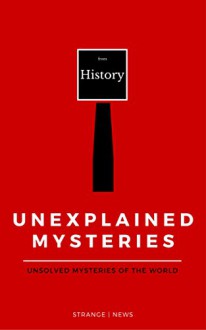
My brother Eric (yes, Eric Erekson) had a book like this when we were kids. He got it for Christmas one year, and I think I must have read it cover to cover a dozen times. I found this one at Nancy's house not long after we were married, and Karen finally gave it to me in 1993 after seeing me read it so much. It's like an encyclopedia of paranormal events, written in a kind of reportage style. Each text chunk stands on its own, so you can read as little as a fifty-word item about a horned lizard found in a block of stone, or as much as the full-page two-column ghost story of Major Stewardt of Ballechin House.
I know my reviews don't usually tip toward the educational application of books (I prefer to focus on my aesthetic experience), but this is the kind of book needed badly for readers striving to make gains as readers between grades 3-8. These brief 'text shots' are highly engaging and motivating, can stand up to multiple re-readings, but without avoiding difficult vocabulary. Kids who need a breakthrough can 'piece' their way through a small text like this without getting frustrated, and re-readings only increase their confidence and competence.
Also, Lu Benke and I have had several conversations about how these books are cataloged in libraries as non-fiction, and how the writers generally tend to use all the sourcing and text features (index, bibliography, dates, names) we would expect of a journalistic work. The book's intent is to inform--to gather and present reports of incidents as they appeared in historical source material. For many of the items, relevant photos add to this informational tone. These are key rhetorical moves, and when found in bulk in a huge volume like this the effect is to say "these things are real". The book makes no pretense of being science or historiography, but its format is that of a 'fact book'. This, despite the editors' note at the beginning disclaiming it as a simple compendium of reports for which the scientific community has no answers. This is a genre usually gaining wide circulation among young readers, but mostly unaccounted for in discussions of children's book genres.


 Log in with Facebook
Log in with Facebook 








